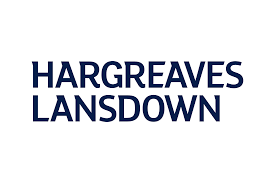Managing your investments is vital for ensuring your portfolio is working hard for you. It is also essential to ensure that your investments have your current risk profile and circumstances in mind. As we get closer to retirement, our ability to take on risk is widely perceived to be diminished. As a result, what assets we invest in starts to change.
Here, we look at what those assets should be - and in what weighting - according to age. While no investment rule for one person can ever be the same for another, there are often broad similarities in how portfolios should be structured in terms of the age of the portfolio holder.
Discover the UK's leading investment platforms, whatever your investment goals. Click on a provider below to get started!
What is asset allocation?
Before looking at what asset allocation should be according to age, it is crucial to understand what asset allocation is. While it is a broad topic that can be discussed at length, briefly put, asset allocation is when a portfolio invests in assets according to specific weightings. So, for example, 60% equities, 35% fixed-income investments, 5% cash. Those weightings will be decided according to an investor’s risk profile and circumstances.
While not a hard and fast rule, the closer you are to retirement, the more your portfolio should invest in bonds. The rationale is that you have less tolerance to losing value, which stocks are more prone to doing as they are more volatile. You cannot tolerate losses as much because you have less time until retirement to recoup the losses you make.
What is the best asset allocation for my age?
While every individual is different (thanks to differing lifestyle choices that result in us all having specific income and outgoings), the following asset allocations are seen to be broadly suitable for the corresponding age. Of course, you may be far more risk-averse. As such, you may want more fixed-income investments in their portfolio - irrespective of their age. And then, there will be others that are far happier to invest in riskier equities.
Investment portfolio for a 50-year-old
Reaching 50 is a crucial time for ensuring you know how your investments are faring and what your asset allocation is, particularly if your portfolio is what you intend to use for your pension pot. Why? Well, it is a time when careers are often well in their stride, yet you still may well have several significant outgoings that you need to cover for the next few years. However, that being said, your salary will hopefully be considerably higher than it was thirty years ago, and you might be close to paying off your mortgage.
Many fund managers, as a result, will advocate an asset allocation of around 50% - 60% in equities with approximately 35% in bonds or fixed-income investments. The remaining amount should be cash and alternative investments. That’s still a reasonably chunky amount to be placed into riskier equity assets that have the potential to fall but also significantly gain.
Investment portfolio for a 55-year-old
At 55, you are most likely to have paid off your mortgage or see the payments materially reduced and very soon to end. Additionally, if you have any children, they will be leaving either school or university. That may or may not be a good thing for you financially. It could mean that they will fly the nest, reducing a significant outgoing you have had for the last twenty years of your life. Not having to fund food, heating and clothing can make an enormous difference to the amount of spare cash you have in your current account.
That said, children who are students at university can be a drain on resources. They have hefty fees to cover, which you may want to help them with, in addition to needing help to fund living costs elsewhere. At the same time, you only have ten years left until your retirement age.
In terms of general asset allocation, people at this age should start to put a little more into fixed-income investments. Some asset managers recommend a weighting closer to 40% - 45% in bonds, with about the same in equities. The remaining amount should consist of cash and alternative investments.
Investment portfolio for a 60-year-old
At 60, many individuals will be zoning in on retirement day - perhaps even eyeing early retirement. Either way, children are less of a drain on resources and will hopefully have left home for good. While this is never a given - particularly with the high housing costs in the UK creating a boomerang generation - they will at least be hoping to earn their own salary. Your mortgage and any other loans are also likely to be paid off, meaning you can more easily invest your spare cash should you want or need to.
Despite that spare cash, your tolerance to risk is materially reduced at this age. You will not want to be exposed to the chance of losing much, if any, asset value in your pension pot. As a result, your investments in equities should reduce while upping your fixed-income investments. While not set in stone, at around 60, pension pots and portfolios are often 35-40% invested in equities. Fixed income takes up the vast majority of a 60-year-old’s portfolio at 55% or thereabouts. Cash should remain at around 5%, with any alternative investments also making up the final portion.
Investment portfolio for a 65-year-old
65 is when many of us will be hoping to retire - if not exactly at 65, then just shortly after or before. Hopefully, by this stage, you have enough in your pension pot to start making withdrawals if needed. Tolerance to risk is exceptionally low as those who are about to retire or have retired will have no salary to help sustain them in the future. Those eligible will be able to start claiming the state pension - though that is currently set at just £179.58 a week.
That works out to just over £9,000, which is not what many people need to achieve the lifestyle wanted in retirement.
That said, outgoings are likely to be at their lowest they ever have been since starting work. However, children may still want the odd handout - perhaps to pay for a wedding, a house deposit or a car.
Asset allocation at this age can sensibly be put at 65-70 % in fixed-income investments, with the rest made up of equities, cash and alternative investments.
Investment portfolio for a 70-year-old
70 is an interesting age to think about investing - many people would think that now is not the time to be investing at all. Instead, living off the pension pot that you did already build up. However, do remember that not only are more and more people working to this age, but more and more people are also living far past 70. Your pension pot needs to be structured so you have enough income for the next 20-30 years. Medical expenses should be factored into any asset allocation decision here, too, as the need to supplement what is offered on the NHS is increasing.
For that reason, you may not want to tinker with your portfolio structure too much. You may want to consider reducing your exposure to equities a little - but not drastically. If you were to keep it at around 25%, you should tolerate losses as long as most of your portfolio is still made up of fixed income securities.
Investment portfolio for a 75-year-old
Hopefully, by the time you are 75, you are 100% retired and have started to make withdrawals from your pension pot. That does not necessarily have to alter the asset allocation within it. Pension providers will have taken your drawdown into account when you start accessing your plan. Again, with people living longer, it can actually make sense to keep asset allocation similar to that of a 65 or 70-year-old - you are far more likely to need your pot growing to ensure you have enough funds to see you through for the rest of your life.
Therefore, it could be a good idea to work with your portfolio manager, if possible, to structure your pension pot so that it is about 20% in equities. Then, try to keep about 5% in cash so that you can easily make investments should a good investment opportunity come along. Alternative investments are also a great option to help make up the rest of your portfolio (in addition to about 70% in bonds). Alternative investments are a fantastic diversifier that can materially reduce your downside risk, which is crucial at this stage.
What should your asset allocation be when you retire?
Of course, all the above examples of what asset allocation may be optimal at a person’s age must not be taken as a “must do.” In fact, this is far from the case. It depends on what you are doing at that moment in your life and what outgoings you have too. Many people may retire before their 65th birthday, while others will retire way after 70.
For that reason, asset allocation pre and post-retirement must also be factored into your considerations in addition to how old you are. This is because retirement is when your salary stops flowing in, making you far more exposed to loss of value in your assets. If you rely on those assets to provide you with an income as a pensioner, you cannot afford to lose as much as you would have done when you also had a salary to support you.
Asset allocation according to age
Asset allocation is a complex investment strategy to employ effectively in a portfolio. While it is there to help minimise risk for a person according to their age and circumstances, knowing when to make changes to the weightings in a portfolio is not easily understood. In fact, it can take a great deal of expertise to get it right.
For that reason, it is highly recommended to speak to a financial adviser or seek other expert pensions advice to ensure that when you come to retirement day, you are not left with any unpleasant surprises. Instead, you have a pension pot or investment portfolio that will help sustain the quality of life that you aspired to throughout your retirement.







